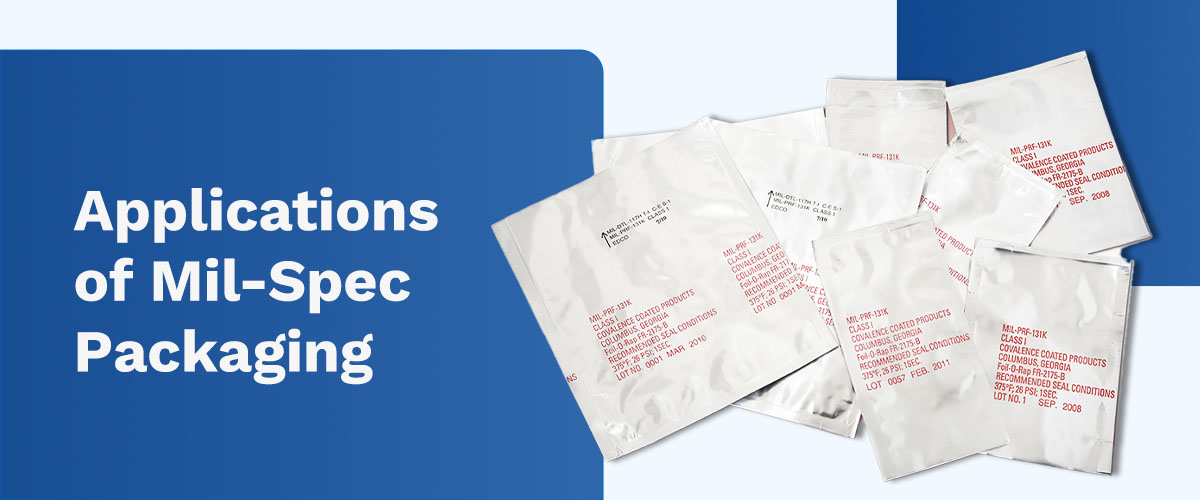Imagine a world where your products can withstand the harshest environments and the most extreme conditions, no matter how sensitive or valuable. A world where your components arrive at their destination intact, ready to perform their critical functions without fail. This is the realm of mil-spec packaging, where more than ordinary packaging materials are needed.
In this article, we’ll dive into the various applications of mil-spec packaging across different industries, exptloring how these specialized materials and methods revolutionize how businesses protect their products.
Understanding Military Specification Packaging
Military specification packaging — or mil-spec packaging — refers to specialized packaging materials and methods that meet the stringent requirements of the United States Department of Defense (DoD). These packaging standards are designed to ensure adequate protection of sensitive equipment, components and supplies during storage, handling and transportation in extreme conditions.
Mil-spec packaging requirements are outlined in various military standards (MIL-STD) and specifications (MIL-SPEC) documents. These documents provide detailed guidelines on the materials, methods and procedures to be used in the packaging process. Some of the key aspects covered in these standards include:
- Material selection: Mil-spec standards specify using high-quality, durable packaging materials that withstand extreme conditions. These materials may include moisture barrier films, anti-static materials, corrosion inhibitors and shock-absorbing foams.
- Packaging design: Military specifications provide guidelines on packaging design, including the use of appropriate cushioning, bracing and reinforcement to protect the contents from shock, vibration and impact during handling and transportation.
- Sealing and closure: Mil-spec packaging standards require the use of secure sealing methods to prevent contamination, tampering, and damage to the contents. These methods may involve heat sealing, ultrasonic welding or specialized closure devices.
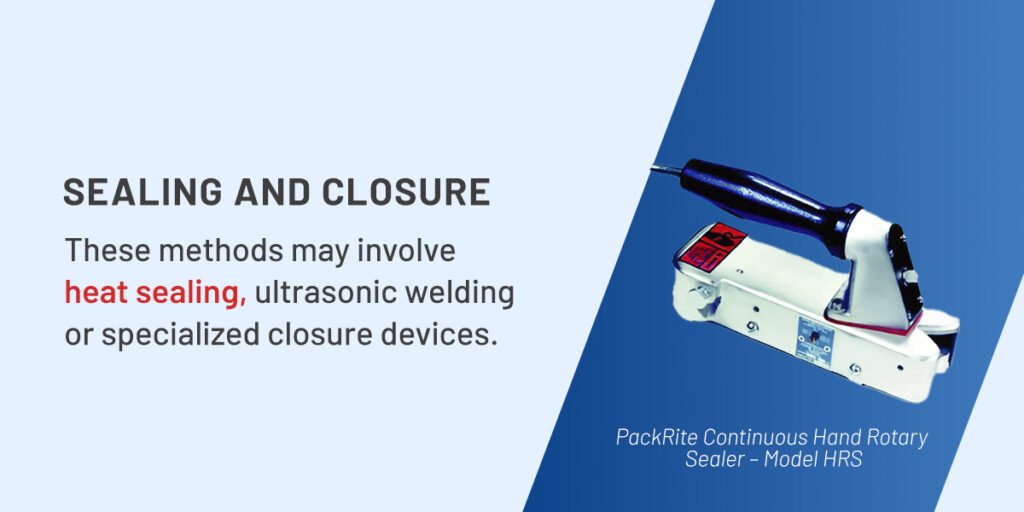
- Marking and labeling: Military specifications mandate clear and durable marking and labeling on packaging to ensure easy identification, traceability and compliance with relevant regulations. Labels must include essential information such as part numbers, contract numbers and handling instructions.
Another essential aspect of mil-spec packaging is the levels of military packing. These are designed to provide a specific degree of protection based on the product’s sensitivity, value, criticality and environmental conditions it will face during storage and transportation. For example, a Level A pack is the most robust and used for items requiring maximum protection. A Level C pack is less stringent and suitable for items that can withstand some exposure to the elements.
Determining the appropriate level of packing is crucial for optimizing protection while effectively managing packaging costs.
Benefits of Military Specification Packaging
The primary benefits of using mil-spec packaging include:
- Enhanced protection: Mil-spec packaging provides superior protection against environmental factors such as moisture, dust, temperature fluctuations and electromagnetic interference (EMI), ensuring the integrity of the contents.
- Reduced damage and loss: Military packaging standards minimize the risk of damage, loss or degradation of goods during storage, handling and transportation by using robust packaging materials and designs.
- Extended shelf life: Mil-spec packaging helps to extend the shelf life of products by providing a controlled environment that prevents deterioration, corrosion and contamination.
- Compliance with regulations: Adhering to military packaging standards ensures compliance with strict DoD regulations and quality control measures, mitigating the risk of non-compliance penalties and reputational damage.
- Versatility: Mil-spec packaging can be tailored to accommodate a wide range of products, from small electronic components to large equipment, making it adaptable to various industries and applications.
By adhering to mil-spec packaging requirements and selecting the appropriate packaging materials, businesses can ensure their products are adequately protected and ready for use when they reach their destination.
Industrial Applications of Military Specification Packaging
While the US Department of Defense initially developed mil-spec packaging requirements for military use and contractors, its superior protective qualities have made it invaluable across various industries. Companies in different sectors have adopted military packaging standards to safeguard their products during shipping, handling and storage. Let’s look at some of the major industrial applications of mil-spec packaging.
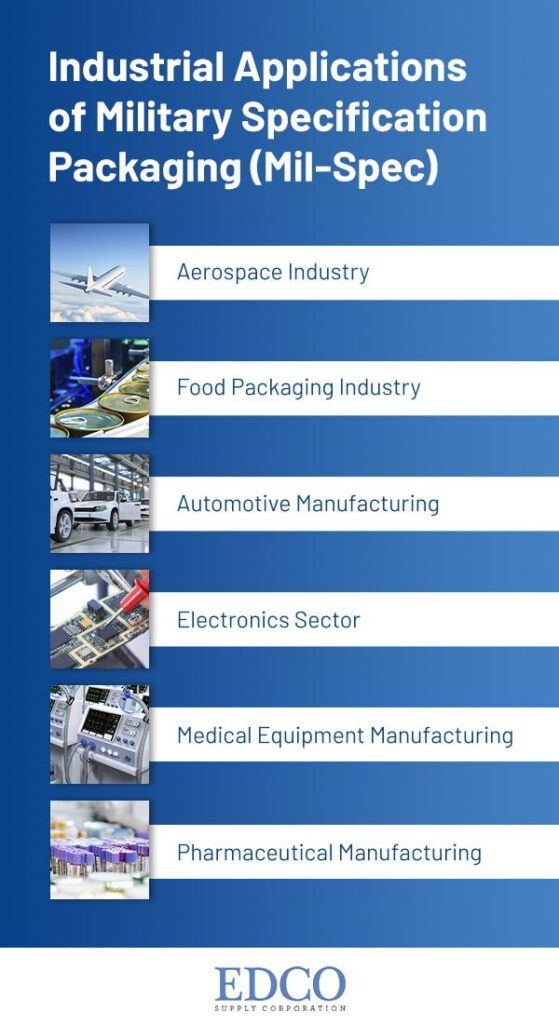
Aerospace Industry
The aerospace industry relies heavily on mil-spec packaging to protect sensitive components, instruments and equipment. Aerospace protective packaging ensures the integrity and functionality of parts subject to extreme conditions during flight and space missions. Regulatory agencies such as the International Air Transport Association (IATA) and the International Civil Aviation Organizations (ICAO) are among the most essential authorities setting regulations for the shipment of goods and components, including packaging and labeling standards.
Aerospace mil-spec packaging can withstand the rigors of air transport, including pressure changes, turbulence and temperature fluctuations. It also protects against electrostatic discharge (ESD), which can damage electronic components, moisture damage and corrosion. Mil-spec packaging in the aerospace industry often incorporates specialized materials like moisture barrier bags, anti-static film bags and shock-absorbing foams to safeguard delicate instruments and critical components.
Mil-spec packaging is vital in storing and preserving spare parts and replacement components. With long-term storage requirements and the need for parts to remain pristine until use, military specification packaging ensures that aerospace components maintain their integrity and are ready for installation when needed.
Aerospace protective packaging often integrates shock indicators, tilt indicators and tamper-evident seals to monitor the package’s condition during transit and alert recipients to any potential damage or tampering. By using aerospace mil-spec packaging, companies can ensure the integrity of their components, reduce costs associated with damage and delays and maintain compliance with strict industry regulations.
Food Packaging Industry
The food industry has adopted mil-spec packaging to ensure food’s safe transport and storage, particularly when food must be preserved for extended periods or transported to remote locations. Packaging food products using military standards helps maintain food quality, freshness and safety.
Food military packaging often utilizes specialized materials such as moisture barrier bags, oxygen absorbers and temperature-regulating packaging. These materials protect food from spoilage, contamination and degradation caused by environmental factors like humidity, temperature fluctuations and exposure to light.
Mil-spec food packaging is crucial for military rations, emergency food supplies and humanitarian aid. These food products must withstand extreme conditions and have an extended shelf life to ensure they remain safe and nutritious for consumption when needed. The adoption of military packaging standards in the food industry has significantly improved the reliability and longevity of packaged food products.
Food military packaging solutions must also withstand the rigors of various transportation methods, including air, sea or ground shipping. Food packaging products that can maintain their integrity under different atmospheric pressures, temperatures and humidity levels are crucial to ensuring food products arrive at their destination in optimal condition.
Businesses in the food industry can access a wide range of packaging materials and custom solutions by leveraging the expertise of mil-spec packaging suppliers. These solutions ensure product safety and freshness and comply with stringent military and civilian regulations.
Automotive Manufacturing
In the automotive industry, military packaging standards protect sensitive components and parts during shipping and storage. Automotive manufacturers rely on military specification packaging to ensure critical components arrive at their destination intact and damage-free.
Mil-spec packaging in the automotive sector often involves specialized containers, such as reusable plastic containers (RPCs) and custom-engineered packaging solutions. These containers can handle the rigors of automotive supply chain logistics, including multiple handling points, varying modes of transportation and potential exposure to environmental hazards.
Automotive mil-spec packaging also plays a crucial role in storing and preserving spare parts. Using high-quality packaging materials ensures that spare parts remain pristine until they are needed for repairs and replacement. These materials protect them from moisture, dust and other components that could compromise their functionality.
Military packaging in the automotive industry must also account for the unique challenges of shipping large, heavy and irregularly shaped parts. Custom-engineered packaging solutions that incorporate sturdy materials, reinforced corners and adequate cushioning are essential to prevent damage during transit and handling.
Proper labeling and identification are also critical military packaging standards for automotive parts. Barcode labels, RFID tags and other marking methods help track components throughout the supply chain, ensuring the right parts reach the right destination at the right time. This level of traceability is essential for managing inventory, coordinating on-time deliveries and facilitating efficient recalls if necessary.
Electronics Sector
In the electronics sector, businesses deal with hyper-sensitive components, circuit boards and devices that require the utmost care and protection during storage and transportation. Even minimal defects or environmental damage can render electronic components unstable or unusable, leading to costly waste and replacements.
To mitigate these risks, companies in the electronics industry rely heavily on mil-spec packaging solutions, particularly anti-static and static shielding bags. These specialized bags prevent the buildup and discharge of static electricity, which can cause irreparable damage to electronic components. Mil-spec static protection packaging ensures electronic components remain safe from ESD and maintain integrity throughout the supply chain.
Moisture barrier bags and desiccants prevent moisture-related damage to electronic components, even during long periods of storage or transportation. Moisture can lead to corrosion, short circuits and other issues that compromise the functionality and reliability of electronic devices.
Proper cushioning and dunnage are also essential aspects of mil-spec packaging for the electronics sector. Delicate components require protection from shocks, vibrations and impacts during handling and transit. Custom-engineered packaging solutions that integrate foam inserts, air pillows or molded pulp trays can help distribute the weight of the components evenly and minimize the risk of physical damage.
Military specification packaging is also crucial for the long-term preservation of electronic components, particularly those that may be stored for extended periods before they’re used in manufacturing and assembly. Mil-spec packaging ensures that these components remain in optimal condition, minimizing the risk of defects or malfunctions when they are finally used.
Medical Equipment Manufacturing
Proper medical equipment packaging is vital in maintaining the safety, stability and appearance of health care products. The medical equipment manufacturing industry heavily emphasizes proper labeling and sterilization. These prevent contaminants from compromising the integrity of the equipment and putting patients and health care professionals at risk.
Health mil-spec packaging solutions integrate features such as tear-resistant materials, puncture-resistant seals and clear labeling. These features ensure the content remains sterile and easily identifiable. Barcode labels, RFID tags and other marking methods enable manufacturers to track equipment throughout the supply chain, monitor expiration dates and facilitate efficient recalls if necessary.
Medical packaging materials such as moisture barrier bags, desiccants and VCIs protect products from environmental factors that could degrade their quality or functionality. These materials help maintain the stability of sensitive components, prevent corrosion or degradation and extend the shelf life of medical equipment.
Cushioning and dunnage are vital aspects of medical equipment packaging as they help prevent physical damage during transportation and handling. Custom-engineered packaging solutions with foam inserts, air pillows or molded pulp trays can help distribute the equipment’s weight evenly and minimize the risk of impacts, vibrations or other damaging forces.
Health mil-spec packaging also takes into account the specific requirements of different medical devices. For example, packaging for implantable devices may require additional layers of protection to ensure sterility and biocompatibility. Similarly, packaging for delicate instruments may include custom-molded trays or cushioning materials to prevent damage during handling and transportation.
Pharmaceutical Manufacturing
The pharmaceutical industry relies heavily on mil-spec packaging to ensure medication safety, quality and efficacy during storage and distribution. Pharmaceutical packaging must meet stringent regulations and standards to protect drugs from contamination, degradation and tampering.
Pharmaceutical mil-spec packaging often utilizes specialized materials such as moisture barrier films, oxygen absorbers and light-resistant containers. These materials protect pharmaceuticals from environmental factors that could alter their chemical composition or compromise their potency.
Mil-spec packaging in the pharmaceutical industry is also critical in preventing counterfeiting and tampering. Tamper-evident packaging, security seals and unique identification markers are integrated into pharmaceutical mil-spec packaging to ensure the integrity of medications from manufacturer to end user.
Pharmaceutical packaging must comply with strict labeling and documentation requirements. Packaging must include essential information such as product identification, dosage instructions, storage conditions and expiration dates. Military specification packaging ensures this information remains legible and intact throughout the supply chain.
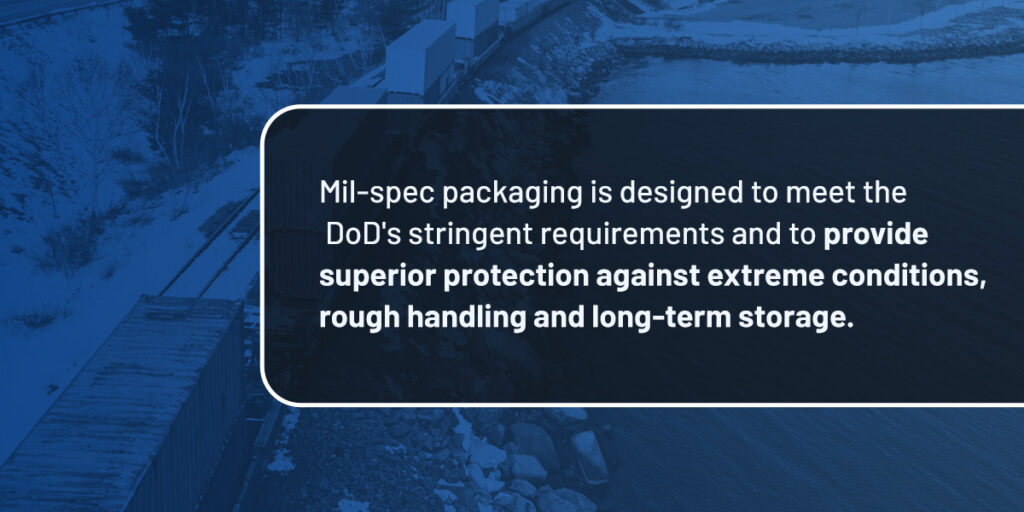
Mil-spec packaging is designed to meet the DoD’s stringent requirements and to provide superior protection against extreme conditions, rough handling and long-term storage. Commercial packaging is designed for general consumer products with average protection and durability.
How Do I Determine the Appropriate Level of Military Packing for My Product?
The appropriate level of military packing depends on factors such as your product’s sensitivity, value and criticality. Level A provides the highest level of protection for critical items, while Level C offers only essential protection for sensitive items. Consult with a mil-spec packaging expert like Edco Supply Corporation to determine the most suitable level of product protection.
Can I Customize Mil-Spec Packaging to Fit My Product’s Requirements?
Yes, you can customize military specification packaging to accommodate your product’s specific needs. The right supplier, like Edco, can develop custom-engineered packaging solutions to ensure optimal protection, taking into account product dimensions, fragility and environmental sensitivities.
Protect Your Products With Edco Mil-Spec Packaging
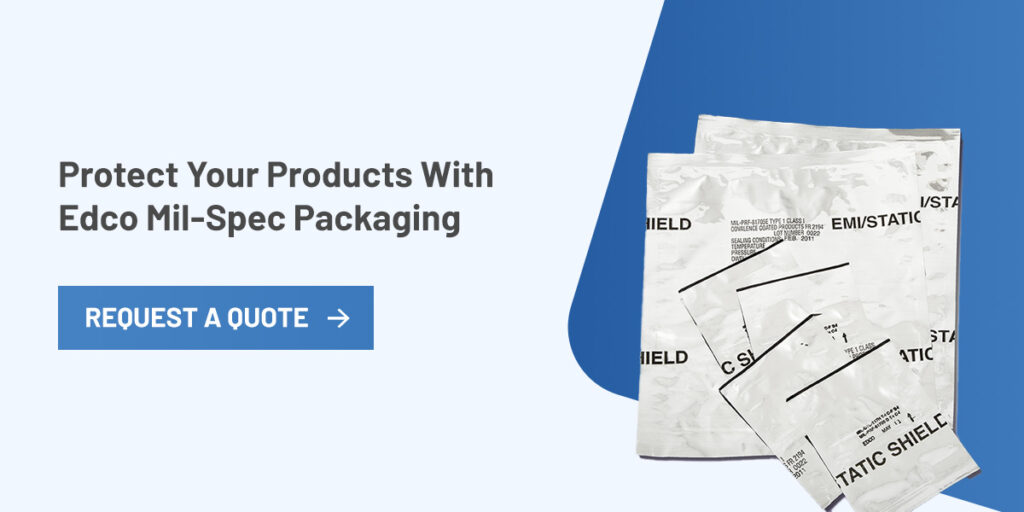
Mil-spec packaging is a proven game-changer in various industries, providing unparalleled protection for sensitive products and equipment. From aerospace and automotive manufacturing to food packaging and medical equipment, military packaging standards have significantly enhanced the reliability, safety and longevity of goods in transit and storage.
If you are looking for the best packaging solution for your industry, partner with Edco Supply Corporation. As a leading supplier of mil-spec packaging, we offer both stock and custom packaging solutions that meet the most stringent military packaging requirements. With our vast inventory, competitive pricing and fast turnaround times, we can help you optimize your packaging process and ensure the utmost product protection.
Don’t compromise on the safety and integrity of your goods. Contact us today for your packaging needs and experience peace of mind with military-grade packaging protection.


